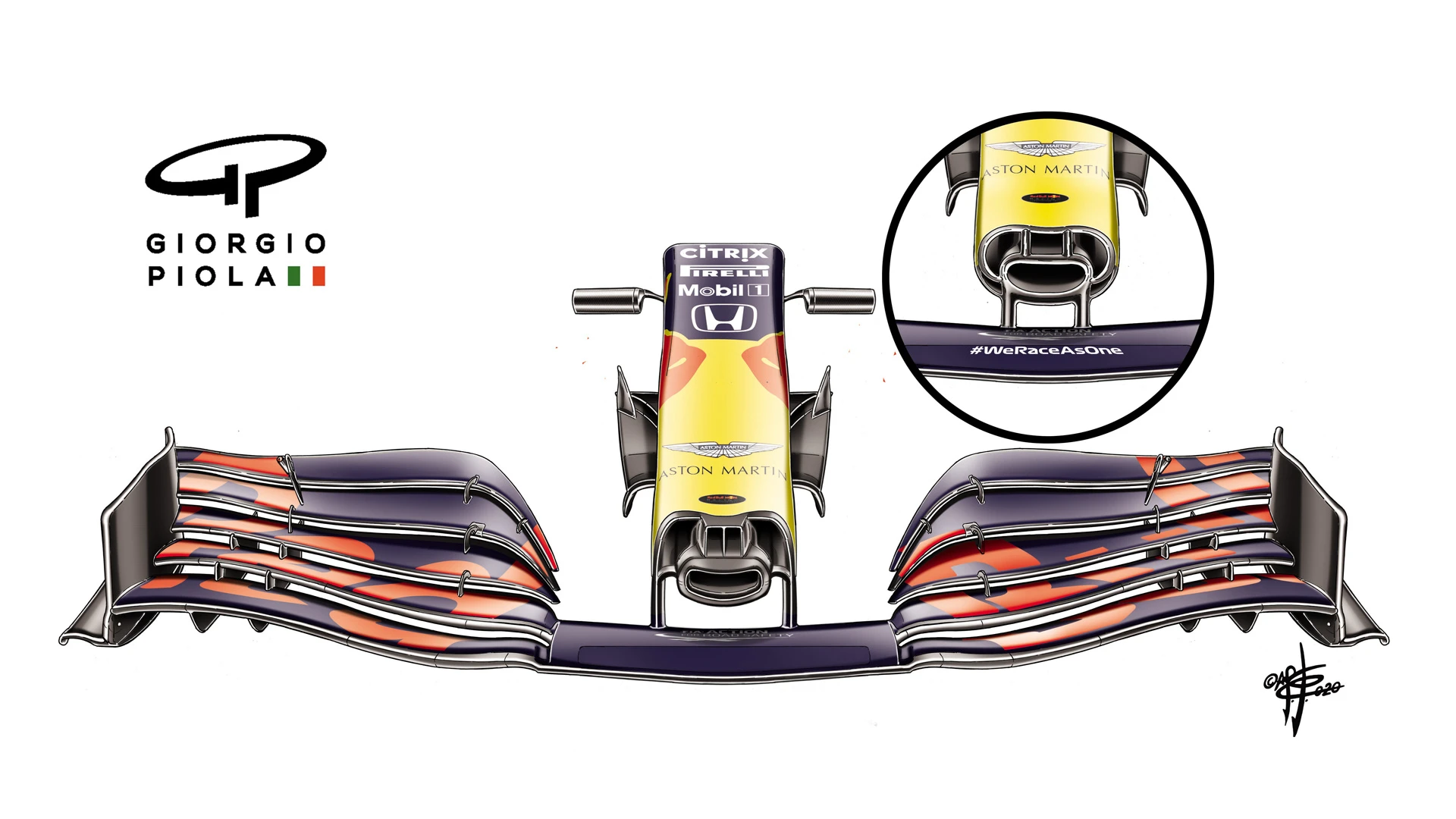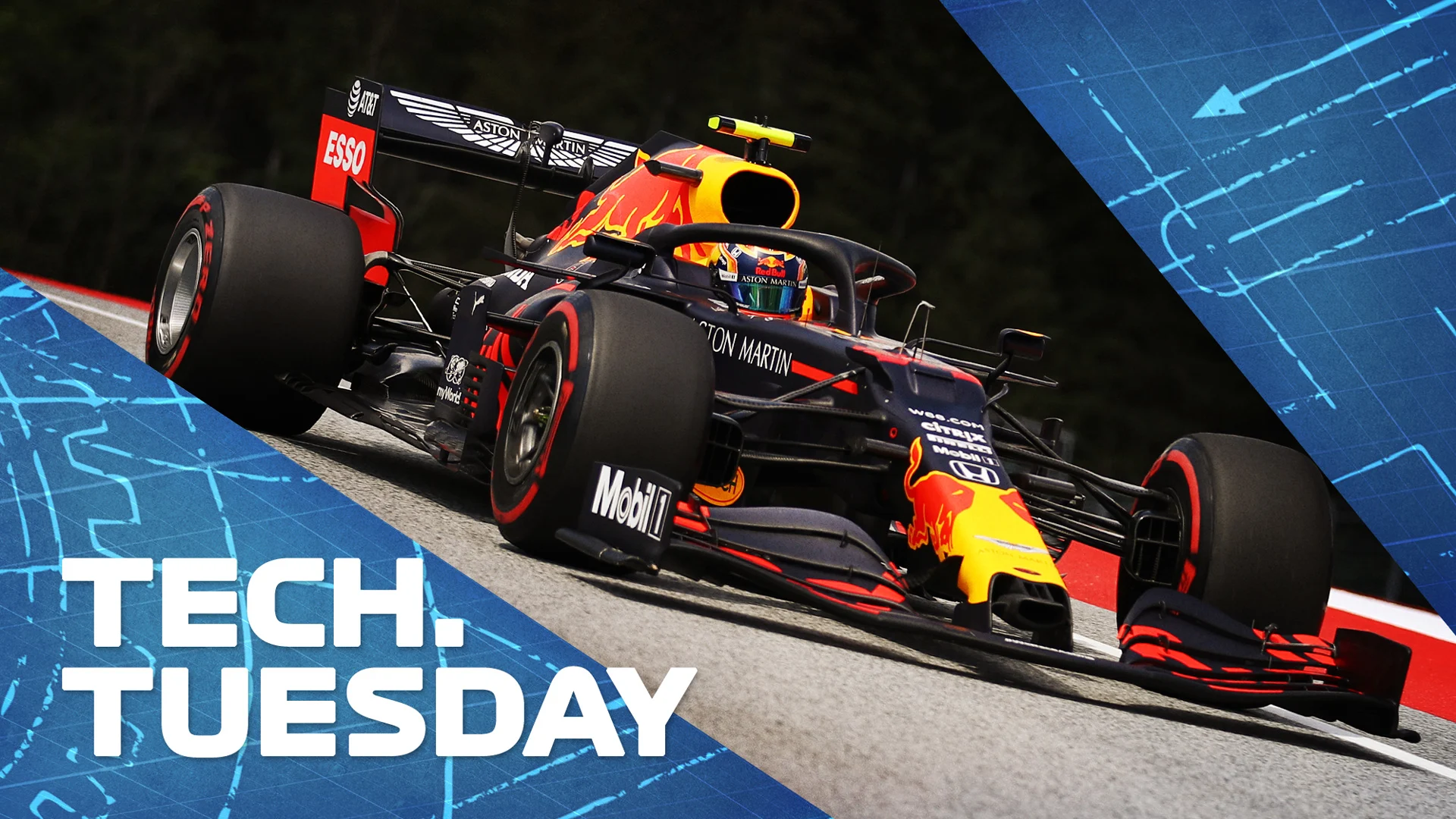We finally got our first glimpse of the true competitive order of the Formula 1 teams at the Austrian Grand Prix on Sunday. And while Mercedes were out in front as expected, Red Bull looked to be next in the pecking order. In today's Tech Tuesday, Mark Hughes takes a look at their 2020 car – and the key issue that was causing the drivers problems at the opening race of the year.
The Red Bull RB16-Honda emerged as the second-fastest car during the Austrian Grand Prix weekend but the 0.5s qualifying deficit to the Mercedes was a disappointment. Two versions of the car were used – an updated one for Max Verstappen, a standard one for Alex Albon – but the difficulties in achieving a good handling balance seemed common to both.
One of the challenges of the Red Bull Ring track is its demanding combination of corner types – with a roughly equal spread of low-speed/high-steering lock corners with the fast sweeps/low steering lock of the middle sector. Achieving a good balance in both types of corner demands a lot of the car’s aerodynamic map, i.e. keeping its handling traits consistent in both low and high speed.
READ MORE: The Winners and Losers of the 2020 Austrian Grand Prix
On Friday the RB16 was suffering an oversteer problem in the slow corners, causing both drivers to spin. Changing the set-up for Saturday appeared to give the car a more benign balance for the rest of the weekend – but the basic limitation of the car in its current state of development would appear to be in its slow corner behaviour.
Formula 1 cars tend to have an understeer characteristic in slow corners because of the front/rear aerodynamic balance required to make the car stable through fast corners.
But the Red Bull in Austria seemed fine through the fast corners – yet with an oversteer balance in the slow. A high-rake concept of car such as the Red Bull can be prone to this apparently anomalous trait, as in slow corners the rear ride height can increase too much for the underbody airflow to remain attached at the rear.
The rear ride height increases as the aero loads pressing it down bleed away at low speeds and suddenly there is too much of a gap between the diffuser and the ground for the air pressure seal to remain strong. The bigger rear ride height is more affected (i.e. it can come up further) than the lower front ride height.
At higher speeds, the rear is pressed down more than the front (because its static height is greater) and the rake angle reduces, giving good rear end grip and therefore high-speed stability.
The greater rear grip reduction at low speeds (compared to a low-rake car) is something that can usually be made nicely progressive, allowing a reasonable balance. Red Bull have excelled at doing this for years now. But there is something about the RB16 where the balance appears to switch too suddenly towards the front in slow-speed corners. Which implies either a sudden stall at the rear, or a sudden grip increase at the front.

The front end of the RB16 is unique in its suspension layout. All teams use the suspension geometry to jack the front of the car down once past a certain threshold of steering lock, giving a front downforce gain in slow corners. But perhaps the RB16’s is doing this too effectively. All of the Red Bull spins in both Austria and Barcelona testing came in high-lock corners.
READ MORE: Verstappen says broken front wing masked Red Bull potential on day 1
The development nose used by Verstappen at the first race is shaped to enable the wing pillars to be mounted to the underside of the nose (as on the Mercedes) rather than the sides, as on the original spec car used by Albon (as shown in the image above). The pillars themselves are aligned straight on the new nose, but point inwards on the original, tweaking the route of the airflow to the underbody.

The comparison between the two seemed inconclusive and the basic slow-corner imbalance was there on both cars. “The spec difference was more of a characteristics than outright performance,” reported Christian Horner, “so both drivers will converge onto the same spec next weekend. At the moment we're unsure whether it'll be Alex's spec or Max's spec, we need to really look and focus on the data on that.”
Hopefully for the team – and for the sake of a more competitive field – these are just teething problems, resulting from only being able to judge the effectiveness of upgrades in simulation rather than on track, because of the delayed start to the season. Now that F1 is back on track, progress should hopefully become easier.
Next Up
Related Articles
 11 times F1 drivers took another driver’s car number
11 times F1 drivers took another driver’s car number Quiz10 quiz questions on British F1 World Champions
Quiz10 quiz questions on British F1 World Champions/TEAM%20PREVIEWSHALF%20TERM%20REPORTS%20DISPLAY%20V1%20(13).webp) End Of Year Reports 2025Racing Bulls’ best and worst moments from 2025
End Of Year Reports 2025Racing Bulls’ best and worst moments from 2025 Tremayne'Why I’ll always have a soft spot for Sauber'
Tremayne'Why I’ll always have a soft spot for Sauber' Sauber’s best moments and most memorable liveries in F1
Sauber’s best moments and most memorable liveries in F1.webp) Winners & Losers5 Winners and 5 Losers from the 2025 season
Winners & Losers5 Winners and 5 Losers from the 2025 season
